| Geoff Sims @ UNSW | 
|
Navigation
Wednesday, 23rd January, 2013
Ridge A (John)
Because communications from Ridge A are limited to Iridium phone and HF radio, there's been a bit of a lull in our blogs. This is therefore a monster blog, covering the past six days.
Gathering with the pilots over breakfast on Thursday morning we looked at the PLATO webcam pictures of Ridge A and pondered the forecast from Charleston: clear now, but strong winds forecast for the afternoon. Since we'd already concluded (prematurely, as it turned out) that the Charleston computer is clueless, we all agreed: let's go!
First up we grabbed our sleep kits, dressed up in all of our very finest ECW gear, and headed out to CKB, our Twin Otter.
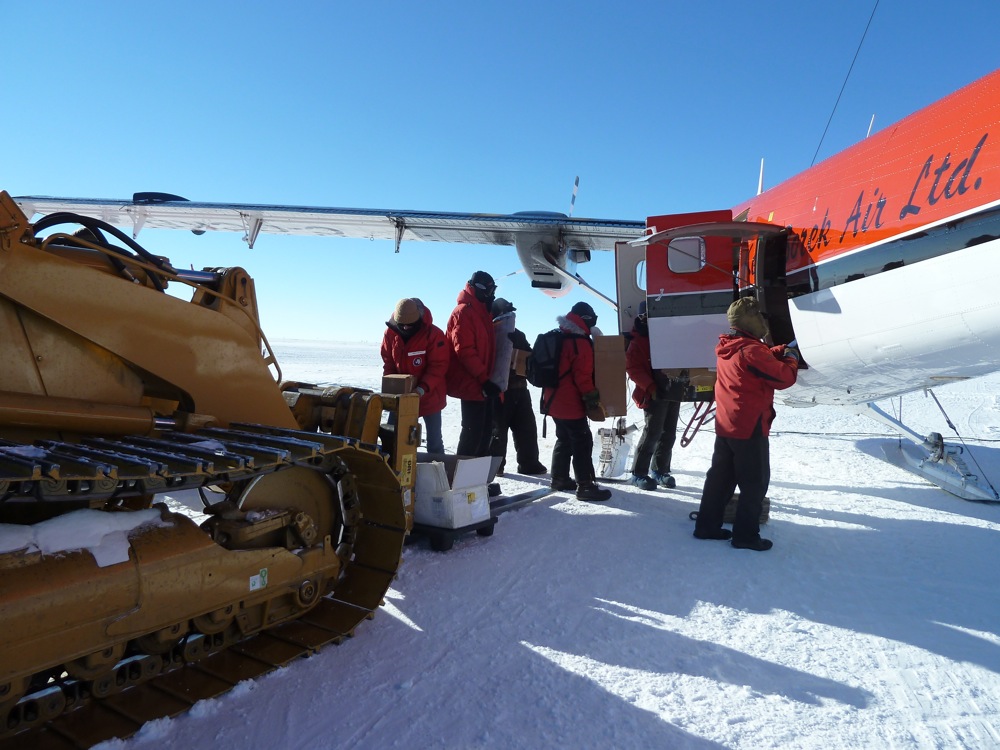
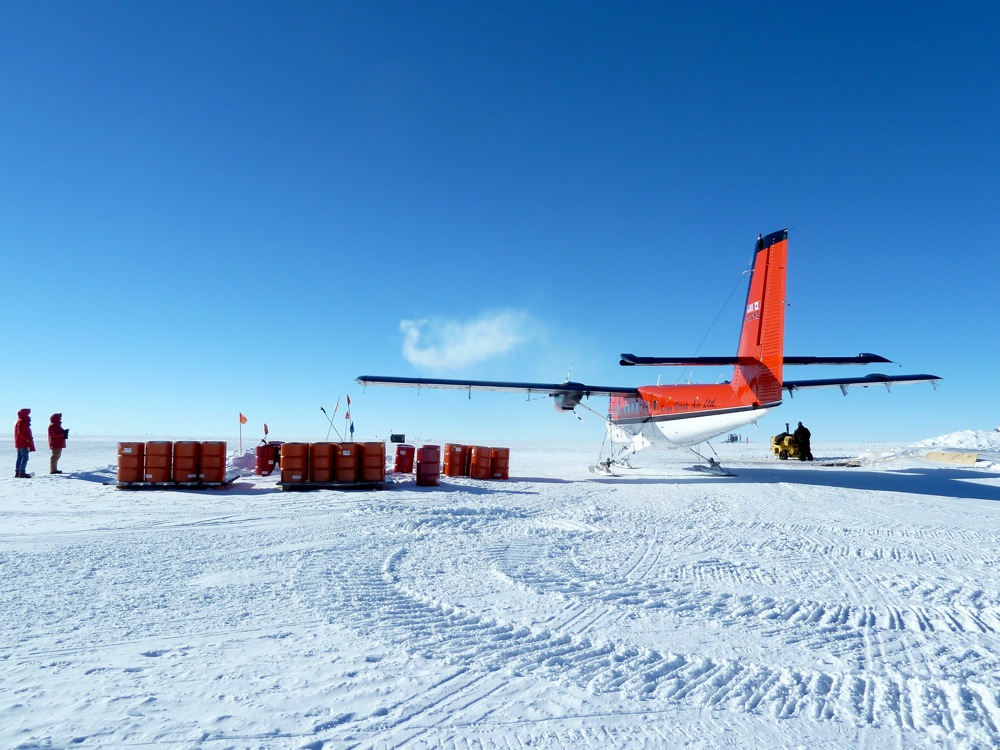
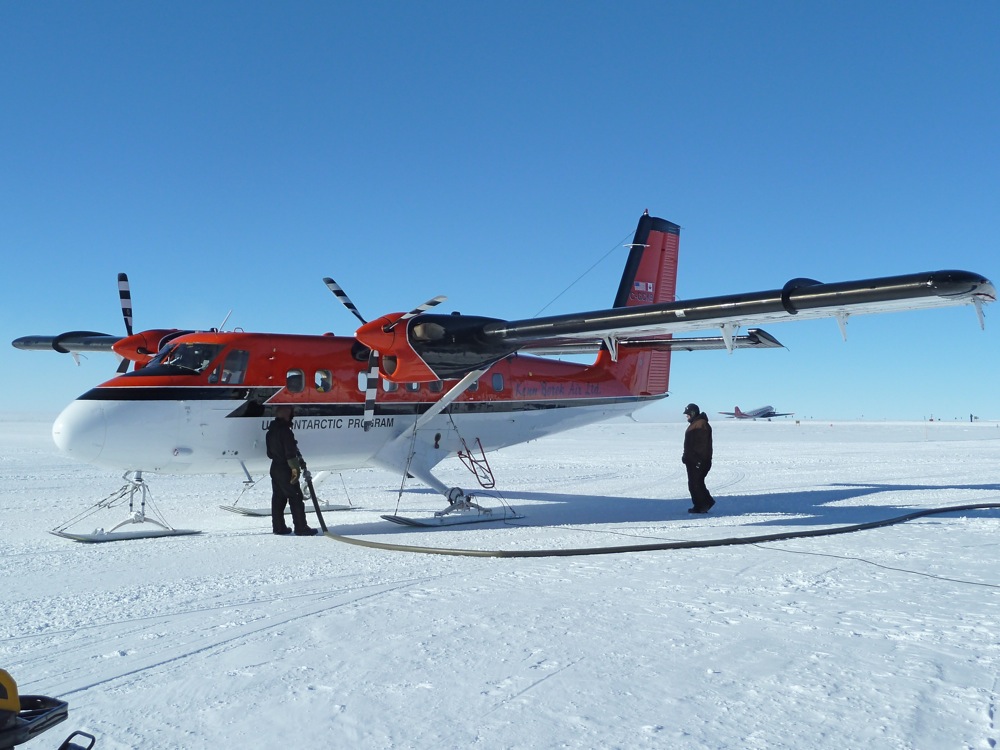
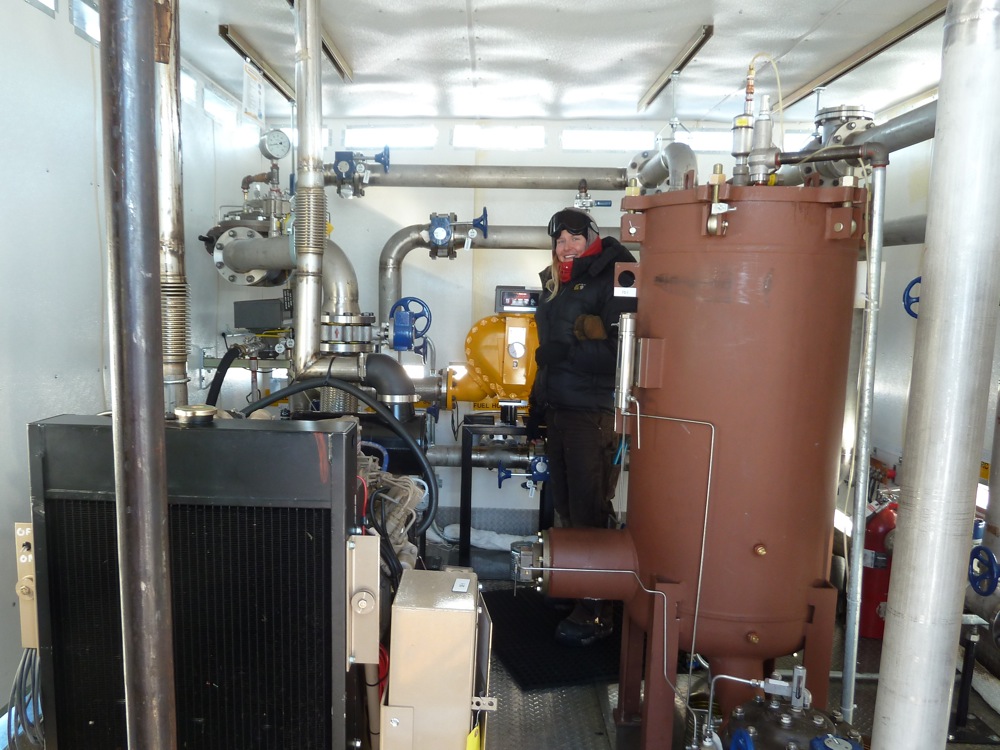
All set, we (Geoff, Nic, Ben the field camp guide, and myself) clambered aboard (not as easy as it sounds, with all that gear on), and settled down for the two and half hour flight to AGAP South.
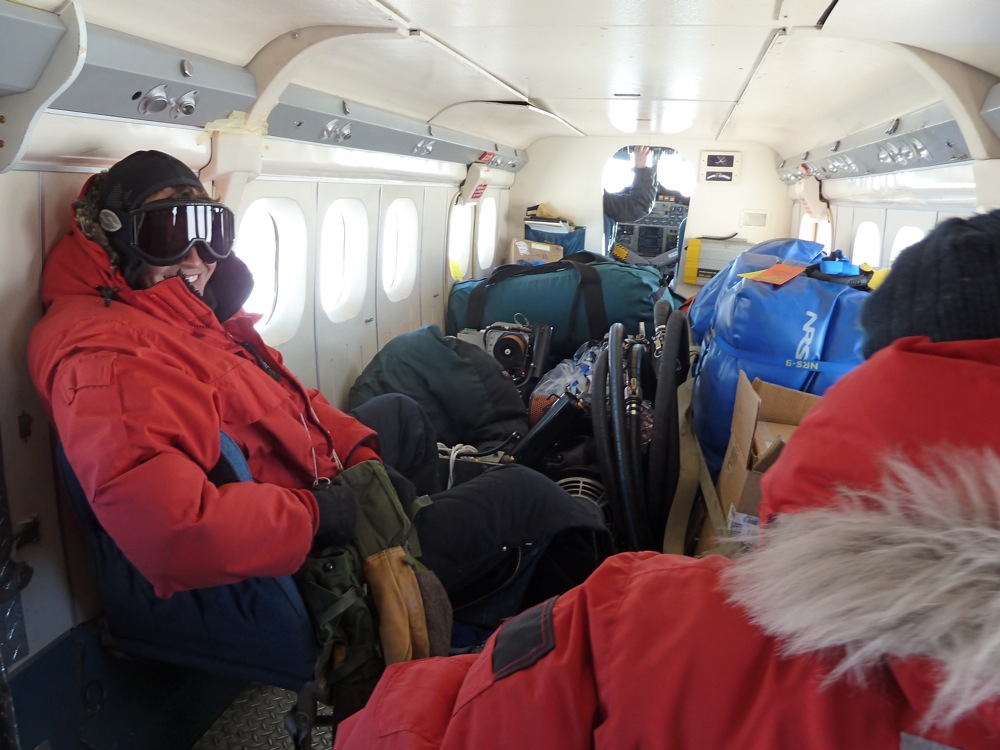
AGAP was an international project to map the Gamburtsev mountains range lying under East Antarctica. It required a number of temporary bases to be established, including AGAP South. Now, AGAP South is just used as a fuel cache.
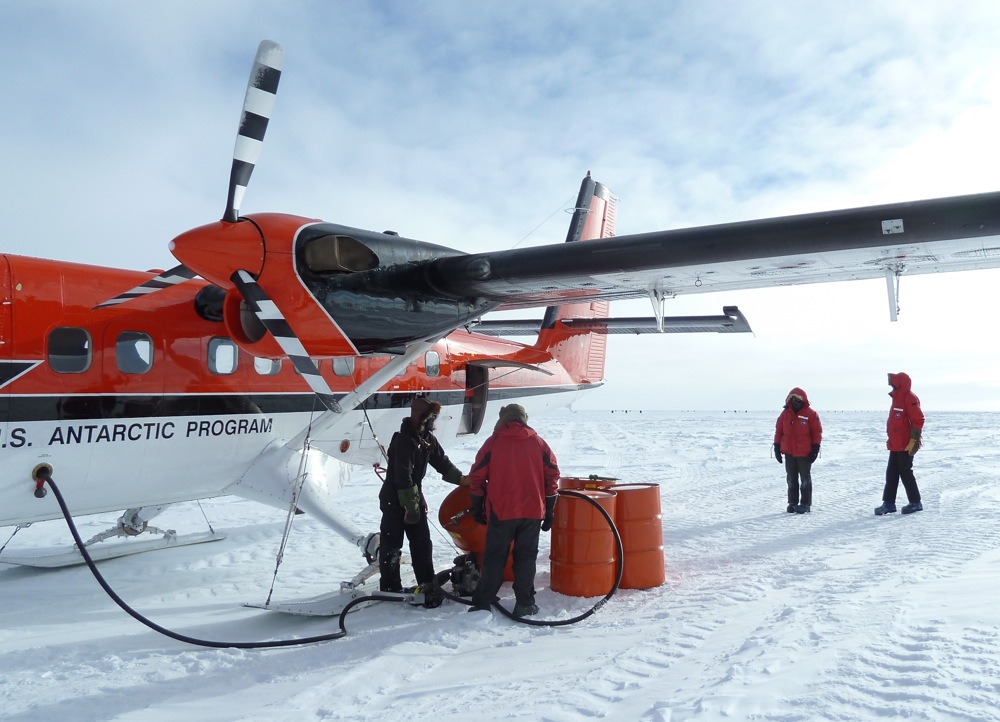
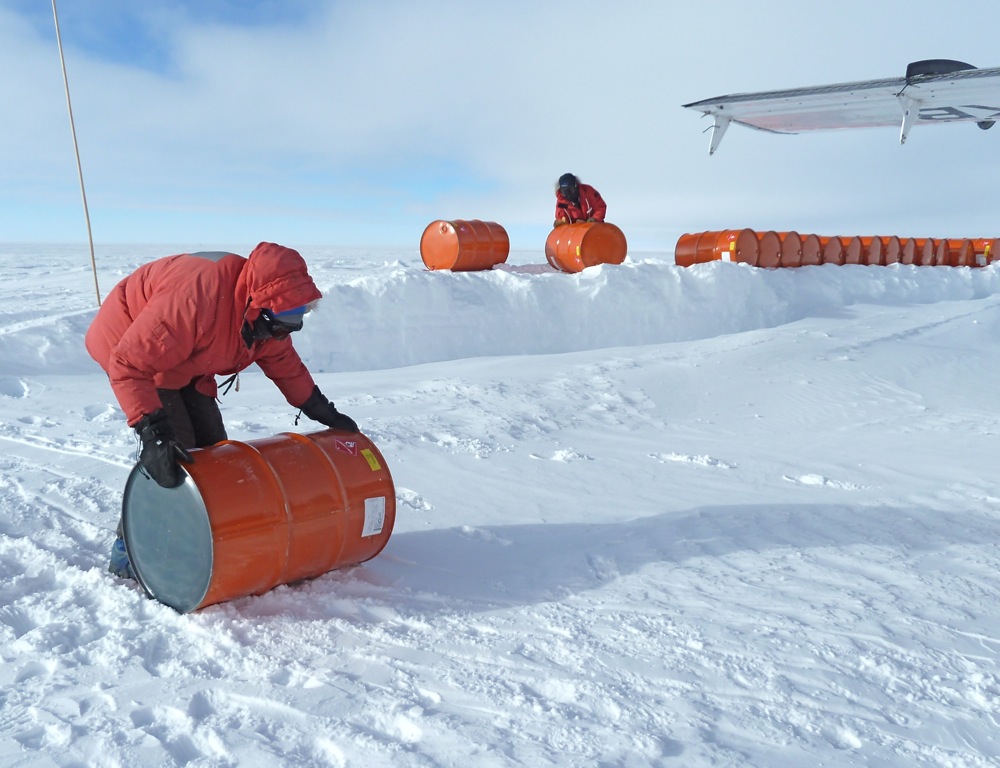
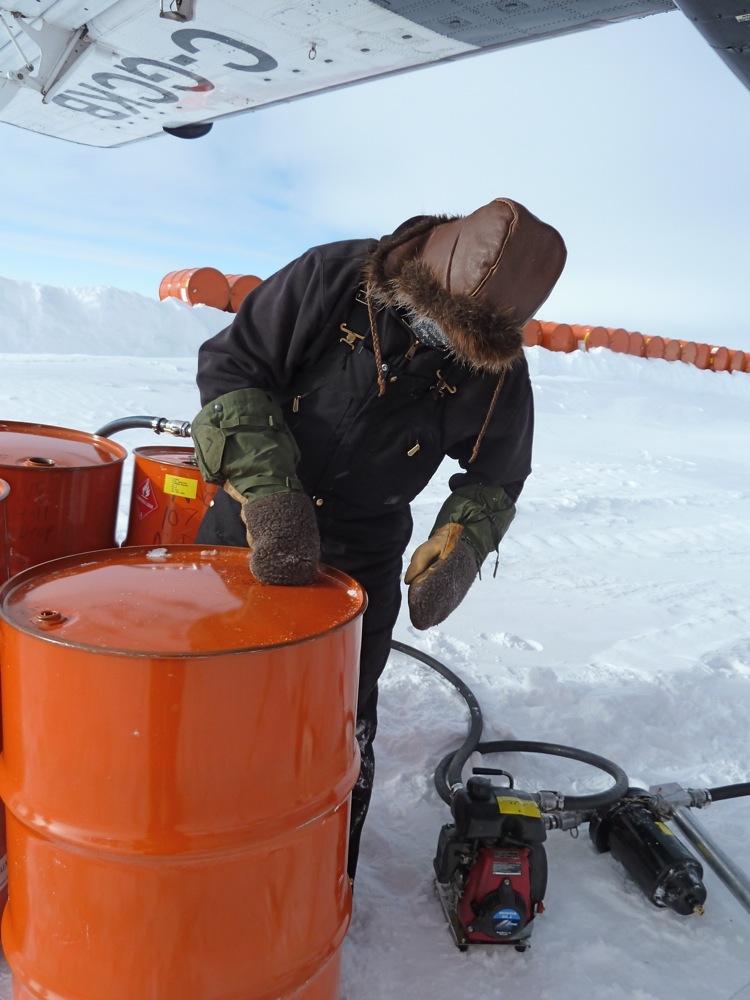
Another hour and half later, we arrive at Ridge A. OMG, the Charleston computers were right about the wind! A temperature around -45C is one thing, but add 20 ~ 25 knot winds to that and, as Malcolm Fraser once famously quoted, life wasn't meant to be easy!
First item of business was unloading the plane, and then setting up camp. The first tent up was our kitchen/living room tent. Then, while some of us opened up the two yellow and green PLATO modules to extract the faulty electronics boxes to send back to Pole with the Twin Otter pilots, others put up the sleeping tents. The Twin Otter stayed as long as it could - about two hours - then once they were sure we were safe the plane headed back to Pole via AGAP again.
One of the key recommendations of our altitude training course was: "Don't do anything too strenuous for the first day or so". Huh? I confess to being cold, exhausted, and feeling somewhat apprehensive.
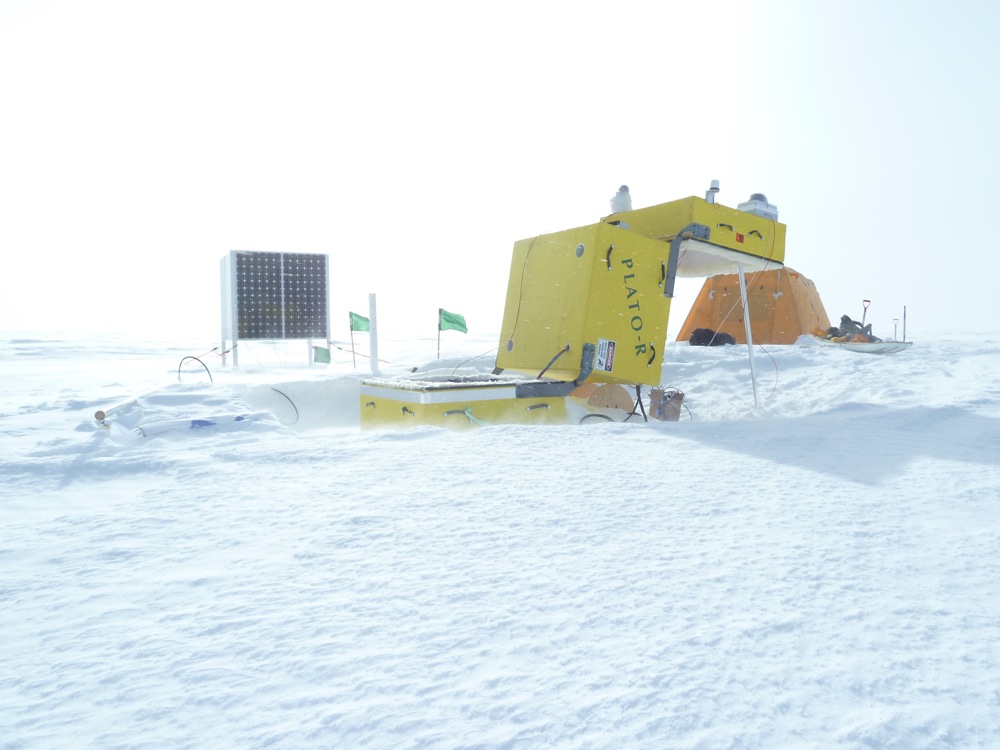
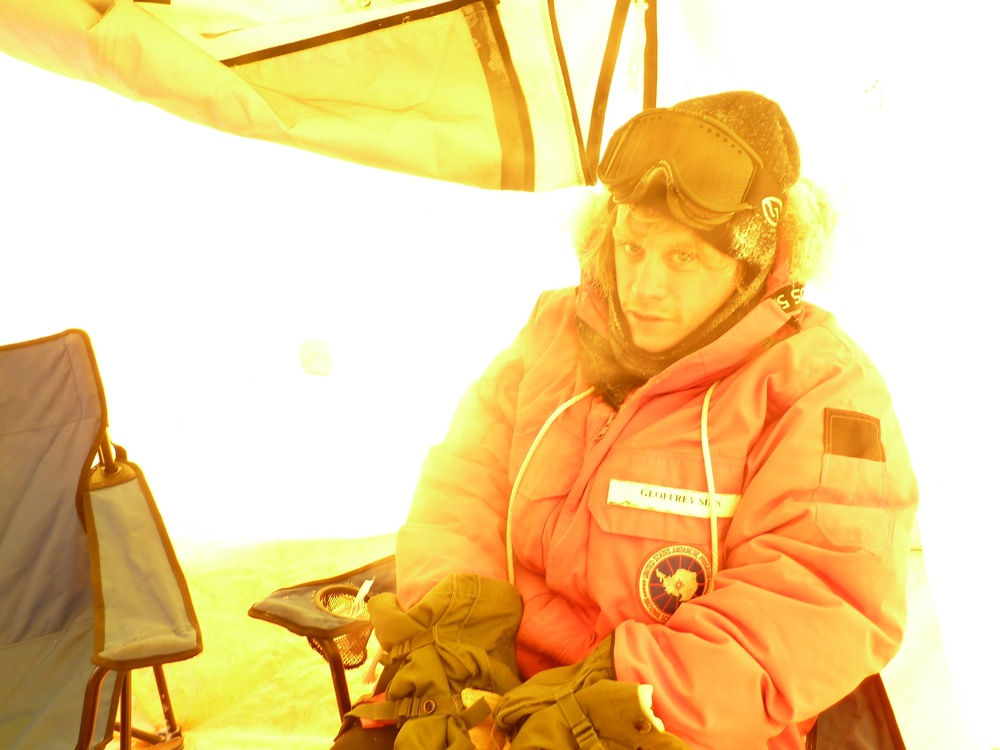
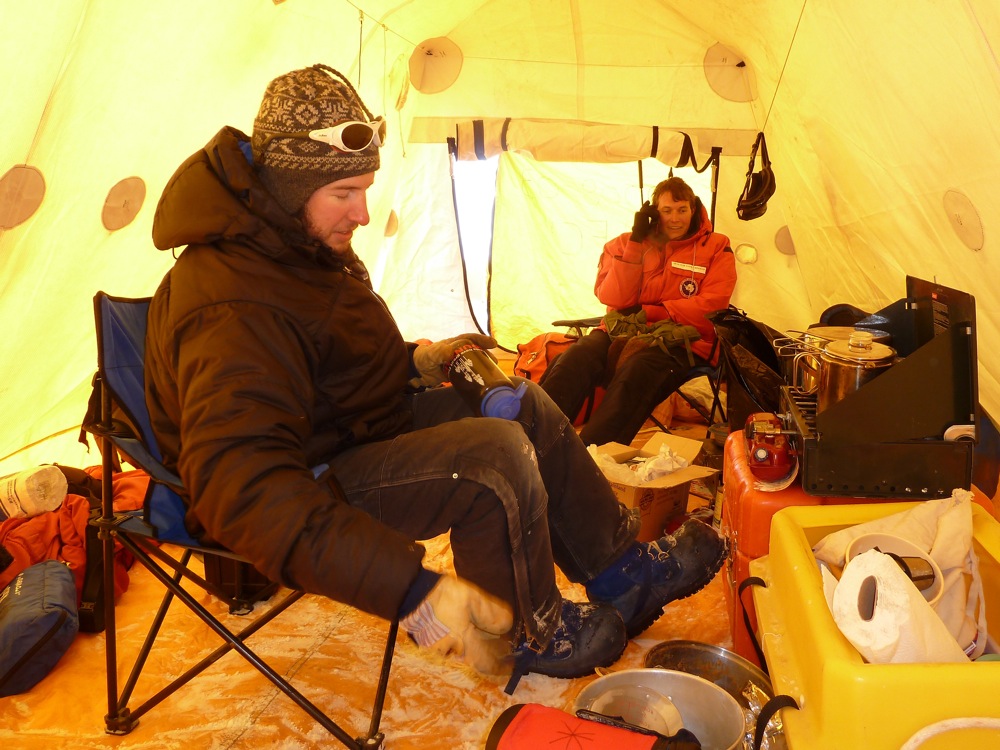
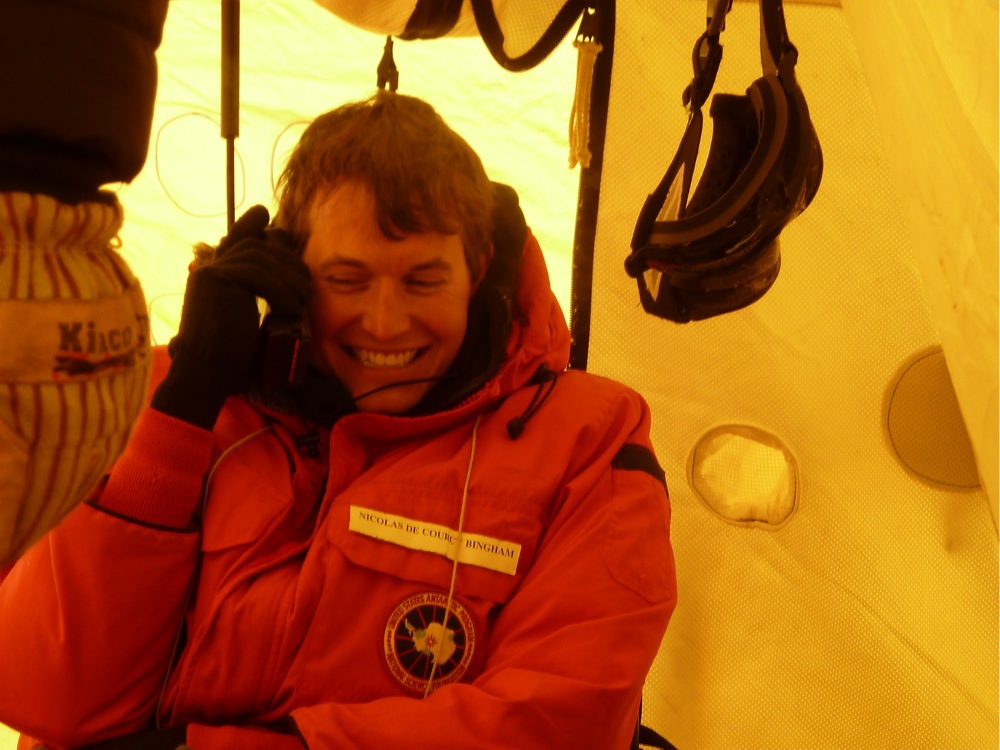
During the first night we all slept fitfully, as the wind whistled past the weather tower and rattled our ripstop nylon sleeping tents. It gradually calmed however, and by morning it was clear, quiet and sunny.
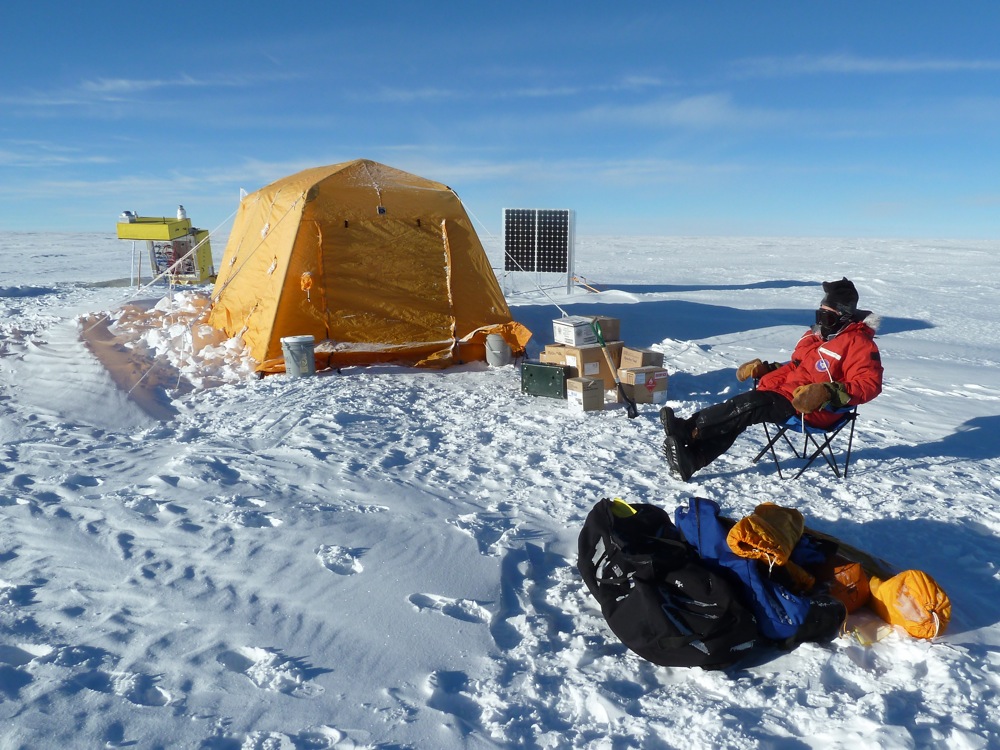
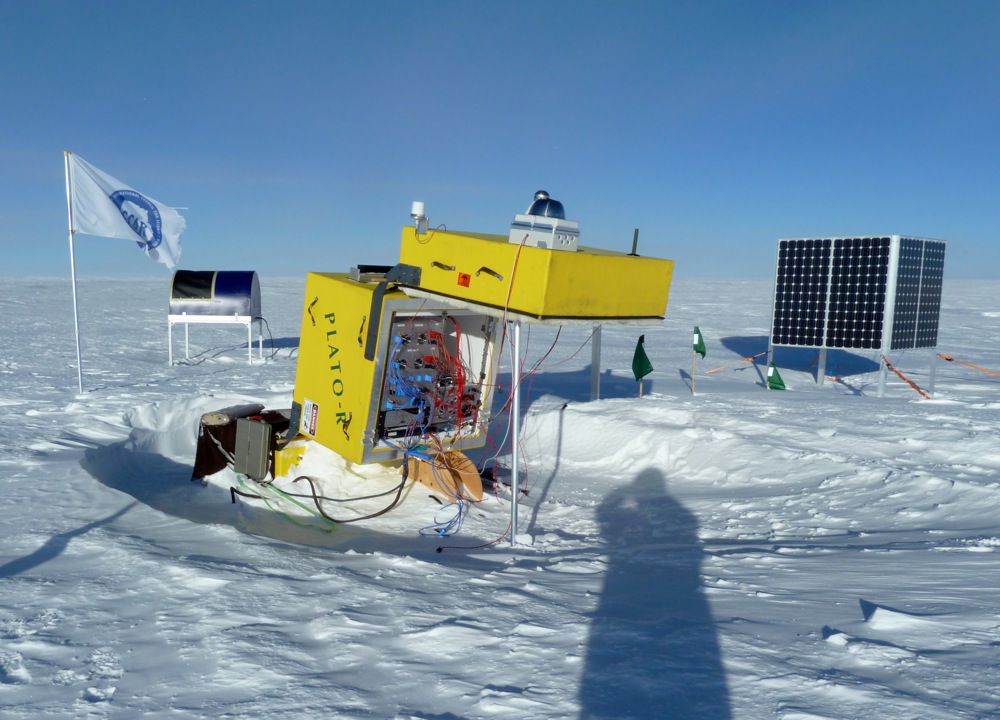
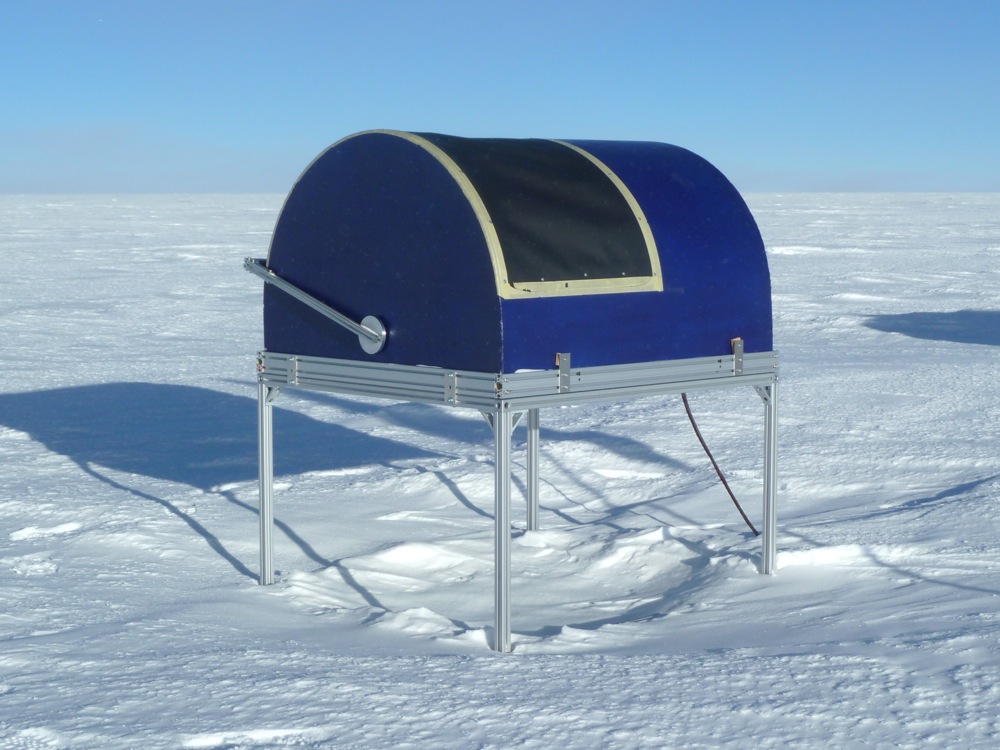

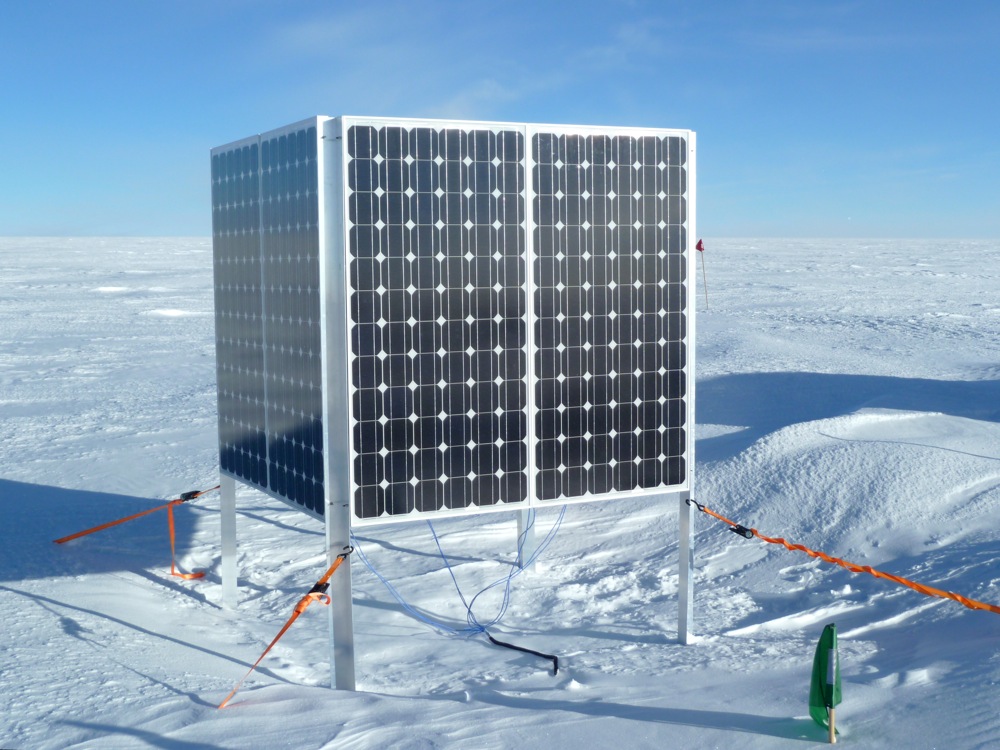
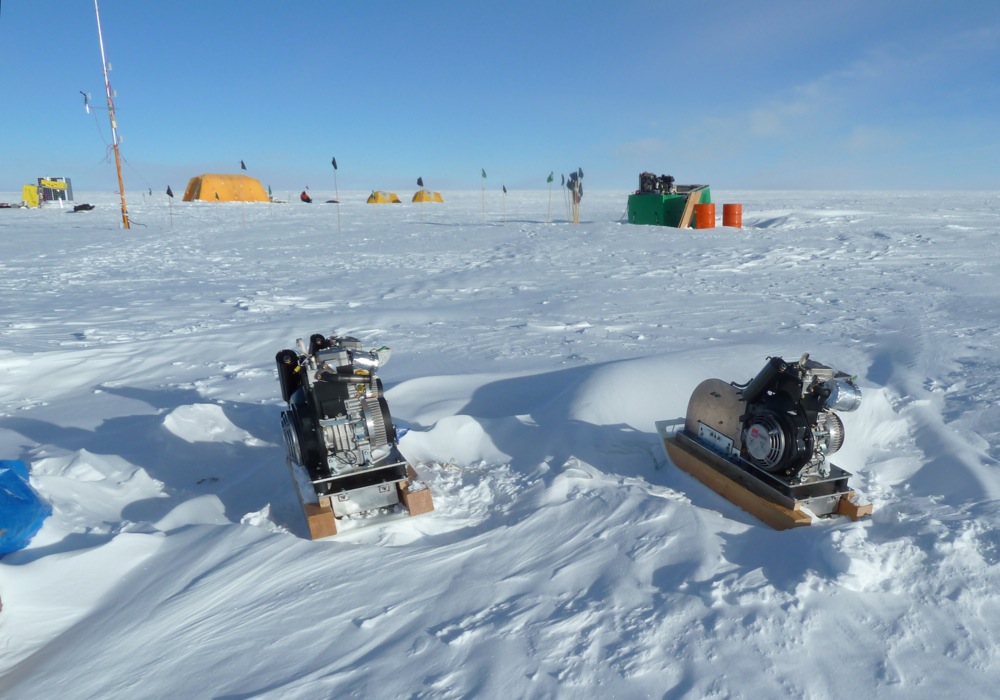
For the next few days we settled in to the maintenance tasks we'd come to do: replacing dead batteries and failed electronics, patching up the software and firmware, swapping the two engines for two new ones, refuelling, and making a number of what I hope are improvements to the Engine Module cooling thermal management systems.
The first step was to erect a large tent over each of the modules. By trapping the air inside and absorbing the heat from the sun, they raise the temperature inside by as much as 35 C, bringing it up to a comfortable zero degrees in the hottest part of the day.
Ridge A is sufficiently far from the south pole that it experiences a significant diurnal cycle, although at this time of year the sun never comes even close to setting. Temperature when the sun is at its highest is around -34C; at its lowest around -44C.
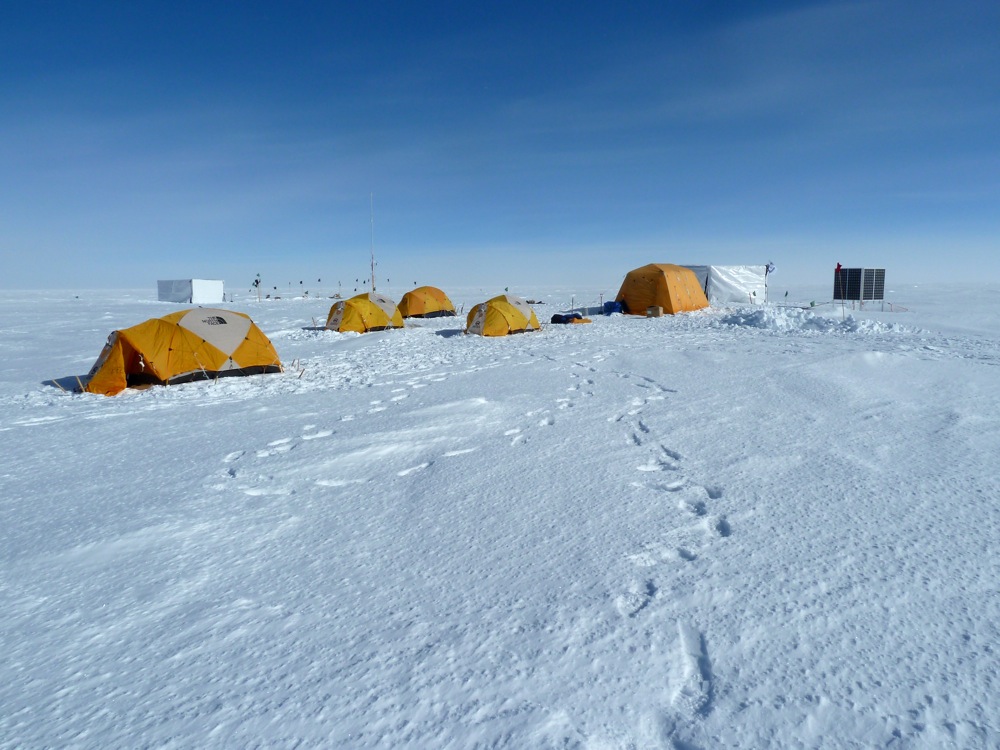
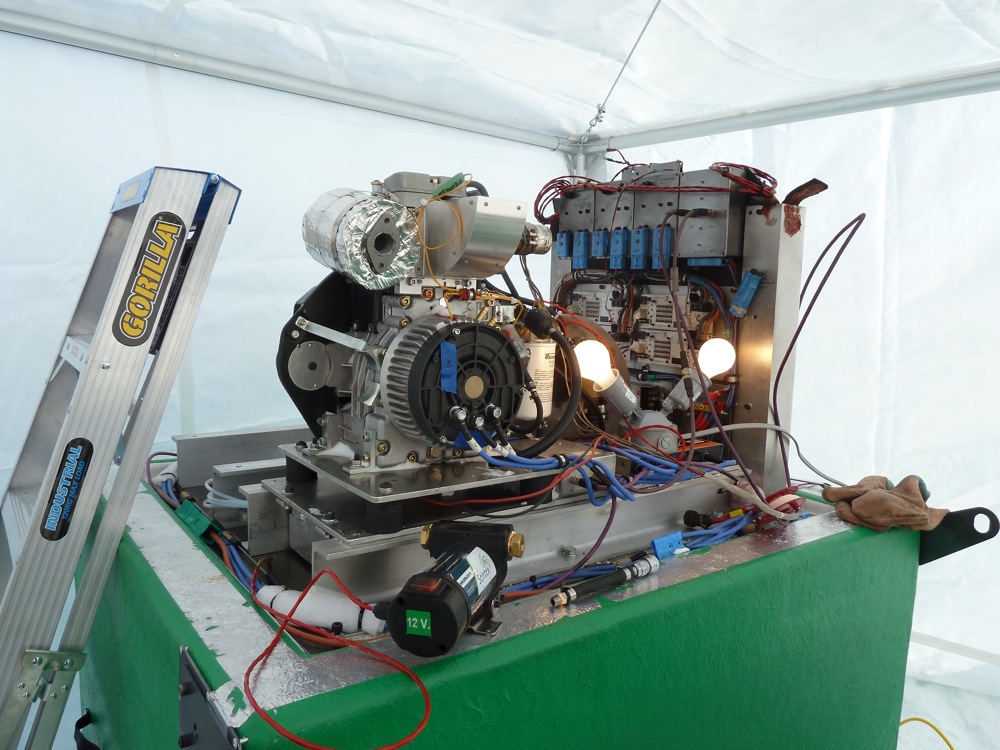
Living at Ridge A for six days and five nights was tough, requiring a disciplined routine. In particular, there is an ongoing struggle not against the cold per se, but against freezing. Once water is frozen, it doesn't pour anymore and you cannot drink it. However, because of the cold and the altitude, one has to drink an enormous amount. Thus, at night we filled our drinking-water bottles with boiling water and tucked them into our sleeping bags with us, using them both as hot water bottles (keeps the toes warm!) and for sipping on during the night. By the end of the trip I was sleeping with a drinking-water bottle, an Iridium phone battery, my camera and my watch, using my own body heat to keep them alive.
Ben kept the stove going almost continuously during the "day", melting snow to provide us with water for drinking and cooking. You cannot survive by eating snow. The energy required to melt it (333kJ/kg) is simply too great for your own body heat to provide.
Although we'd planned that Geoff would only spend two nights here, and Nic and I four, bad weather at Pole and various other factors meant we saw no Twin Otters for five days. At 8 am each morning Ben would phone Comms. at Pole via Iridium, while we waited in anticipation for news that the plane would come. Morning after morning, it didn't. We were starting to feel very isolated.
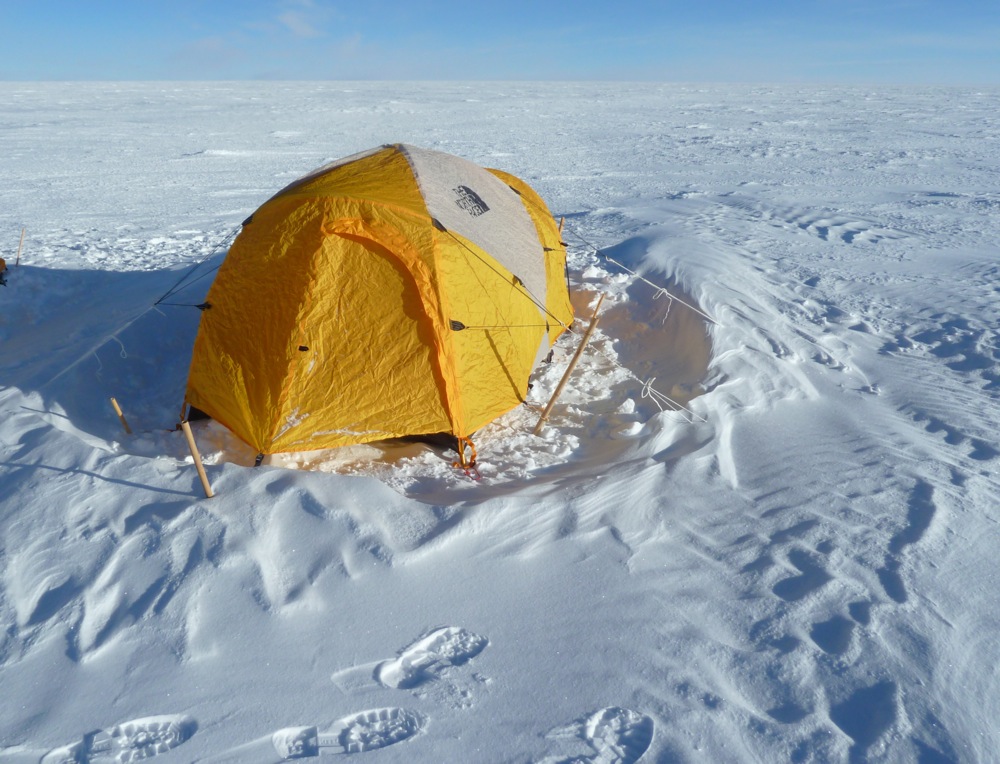
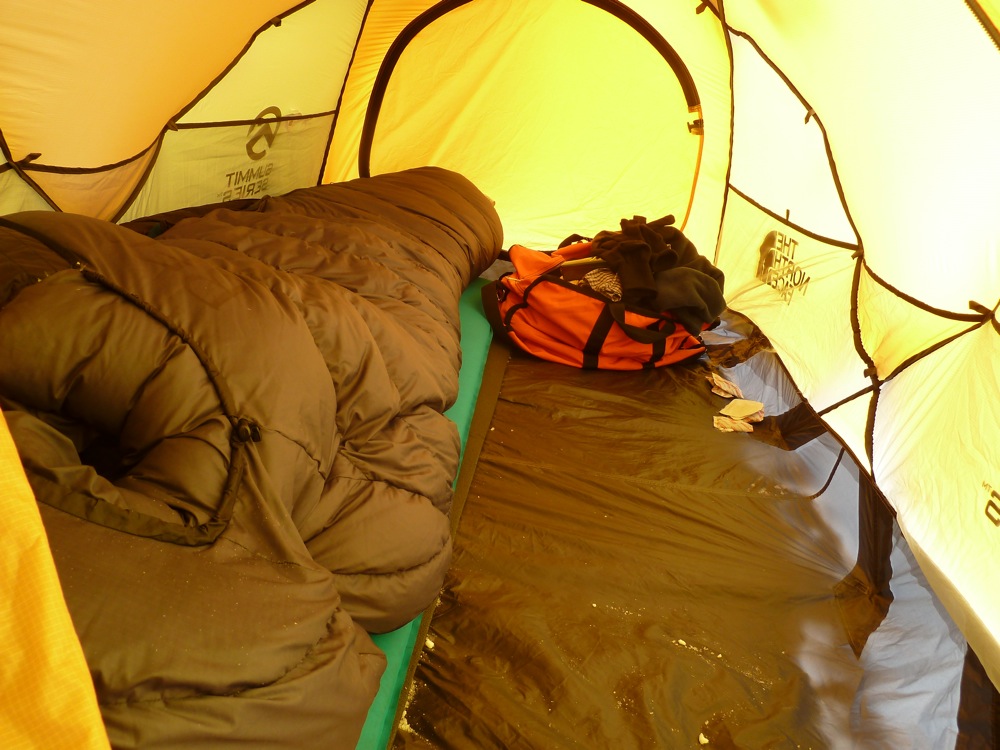
Lying awake in my tent in the morning, tiny ice crystals drop constantly from the roof, having condensed there from my breath. I can see them but can't feel them until occasionally one lands ever so gently on my lips. It's a delicate and quite exquisite sensation.
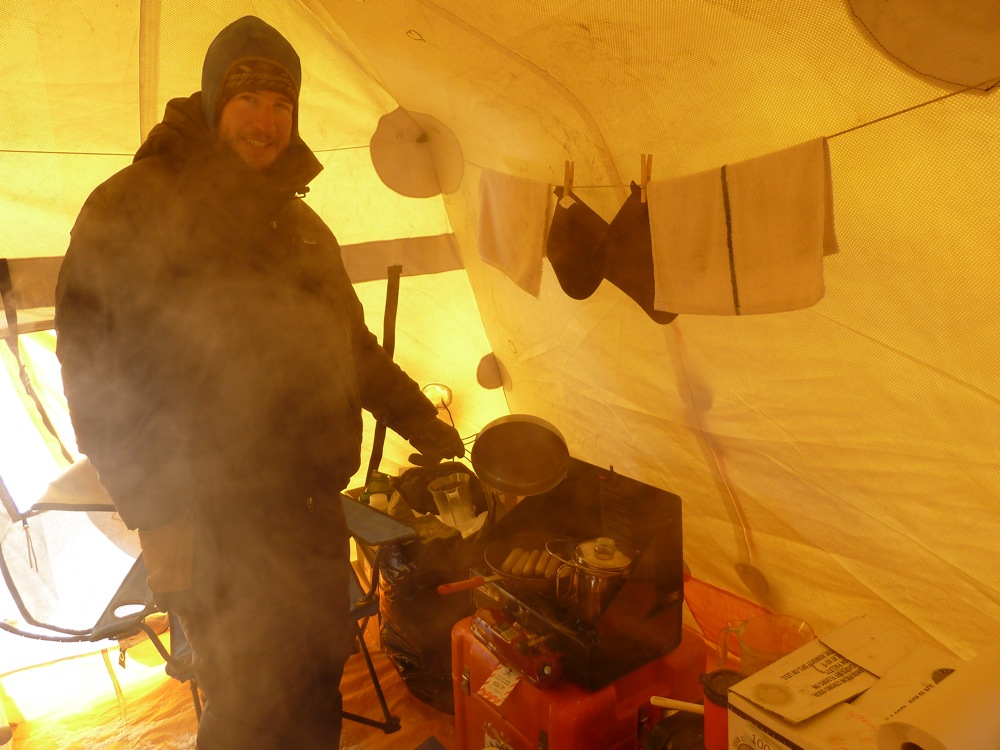
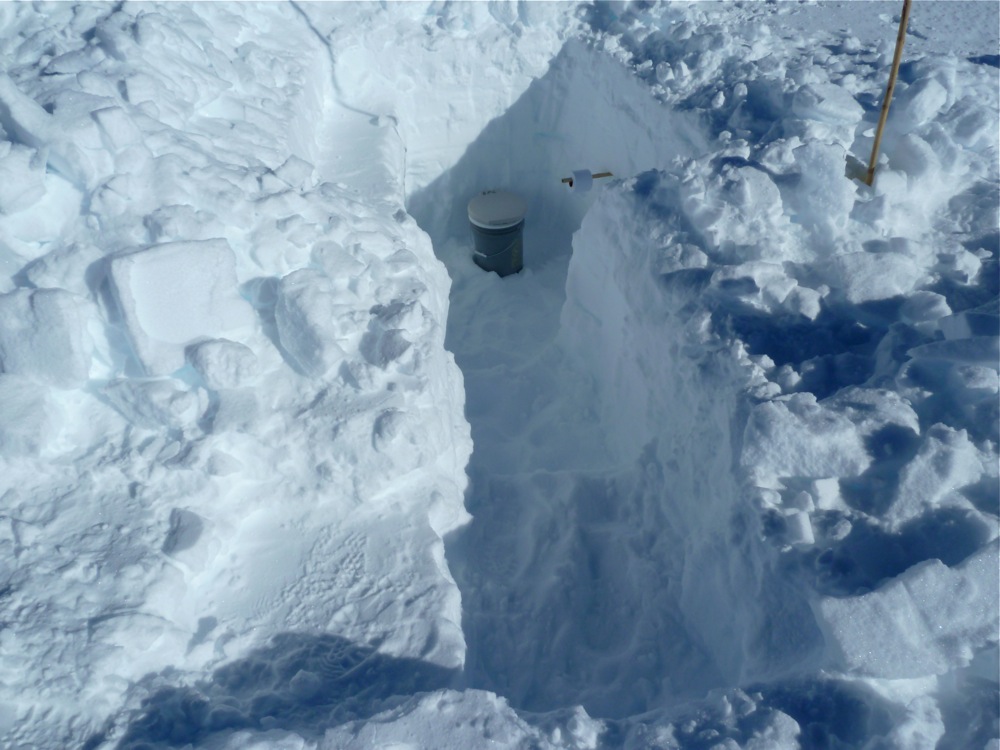
The field camp starts with the Twin Otter bringing in people and gear, and taking off almost empty. It finishes with the Twin Otter taking the people and gear out again, and thus taking off with as heavy a load as it can. At this elevation (roughly 4,500 m pressure altitude), and on skis, even the Twin Otter needs a good length to get airborne. One of our daily tasks was thus to shovel snow off the skiway to smooth out the bumps, while adding black plastic garbage bags full of snow as skiway markers.
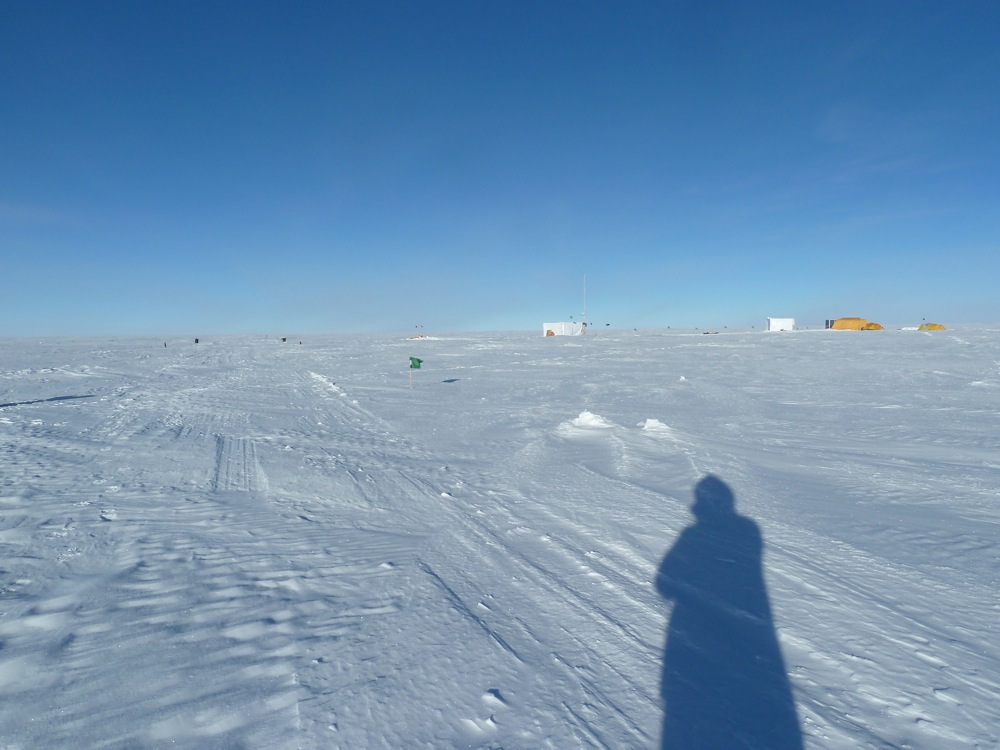
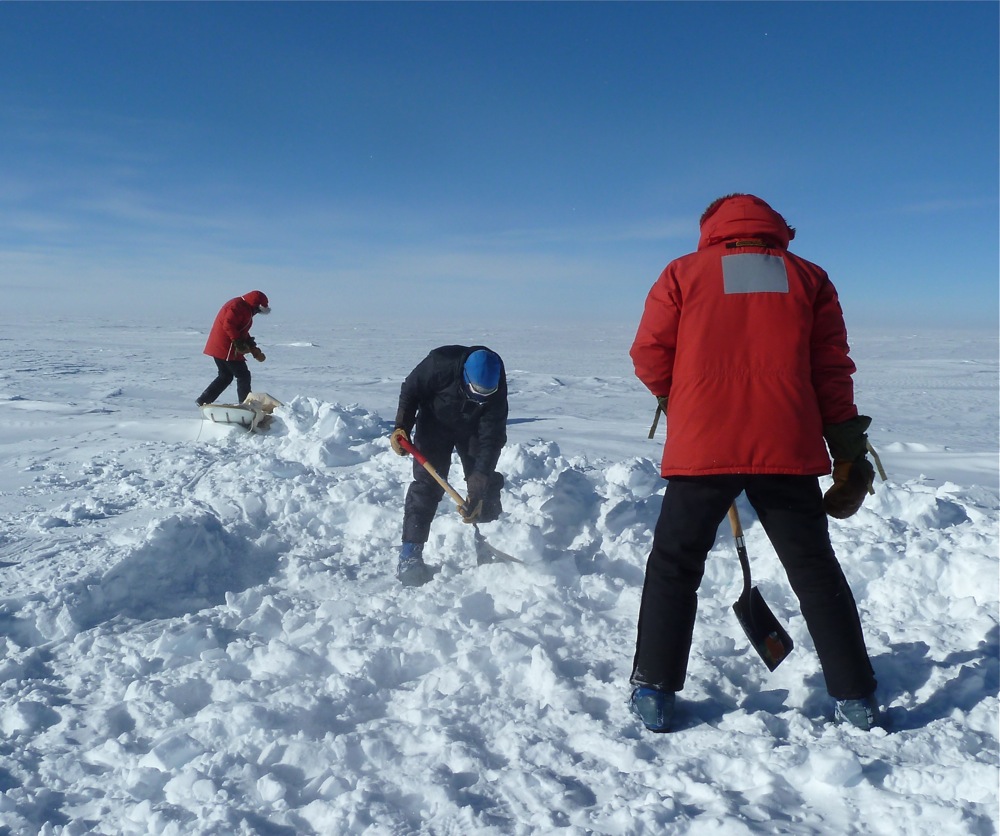
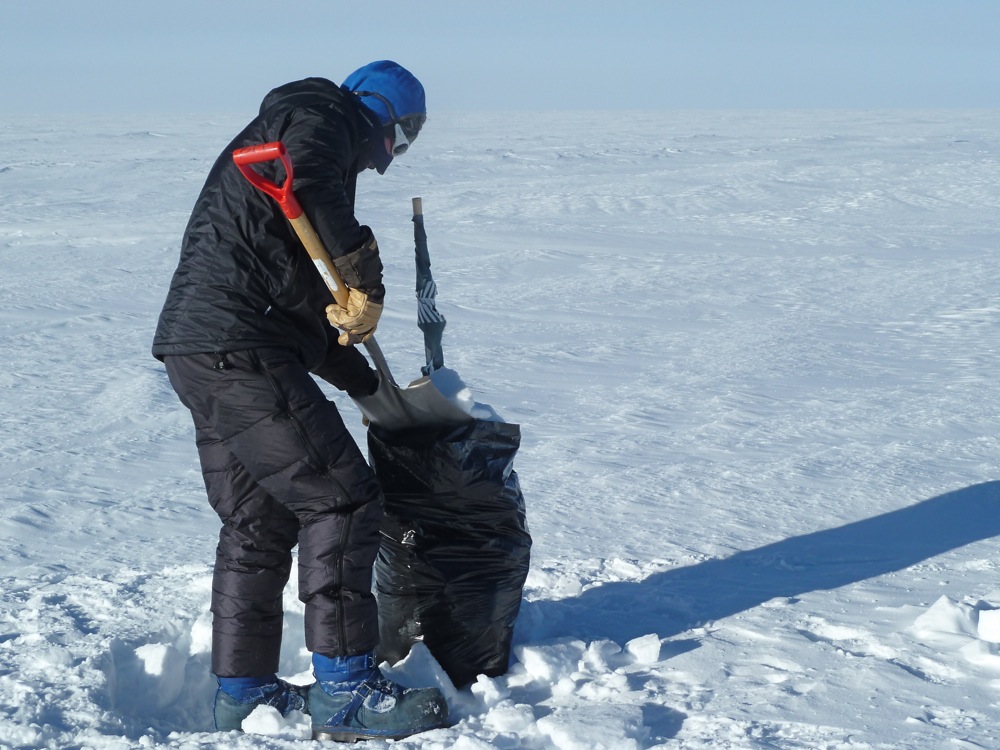
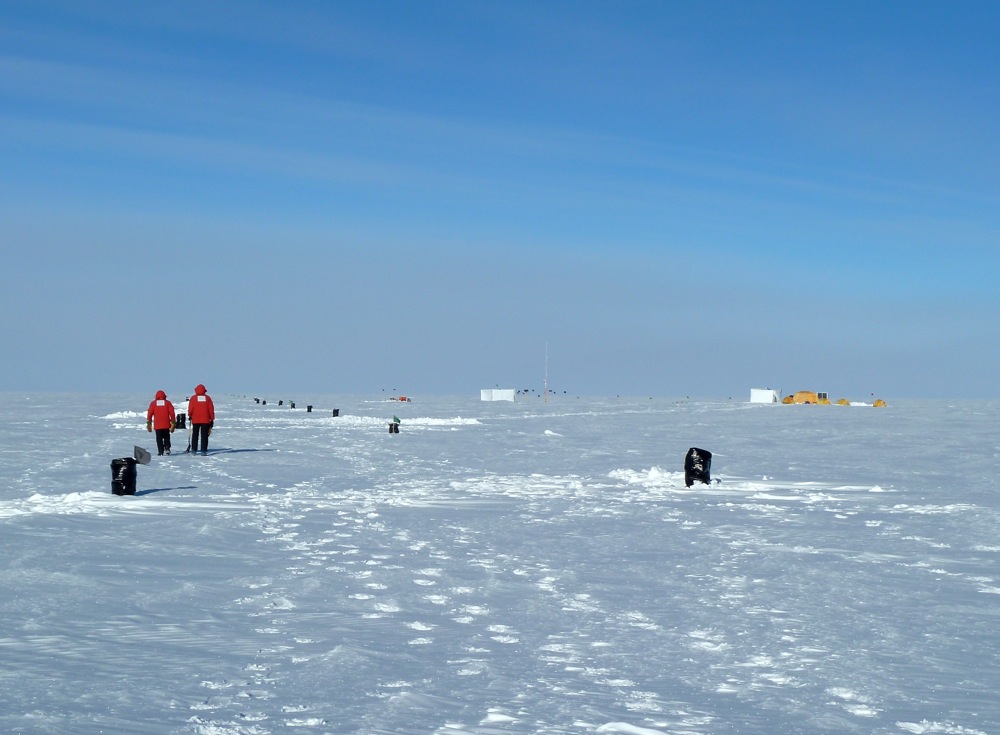
By the fifth morning we'd done almost all we could do, and it became increasingly important that the Twin Otter find a way to get to us. Fortunately, Ben's daily weather reports, plus a new-found respect for the Charleston computer, converged favourably today.
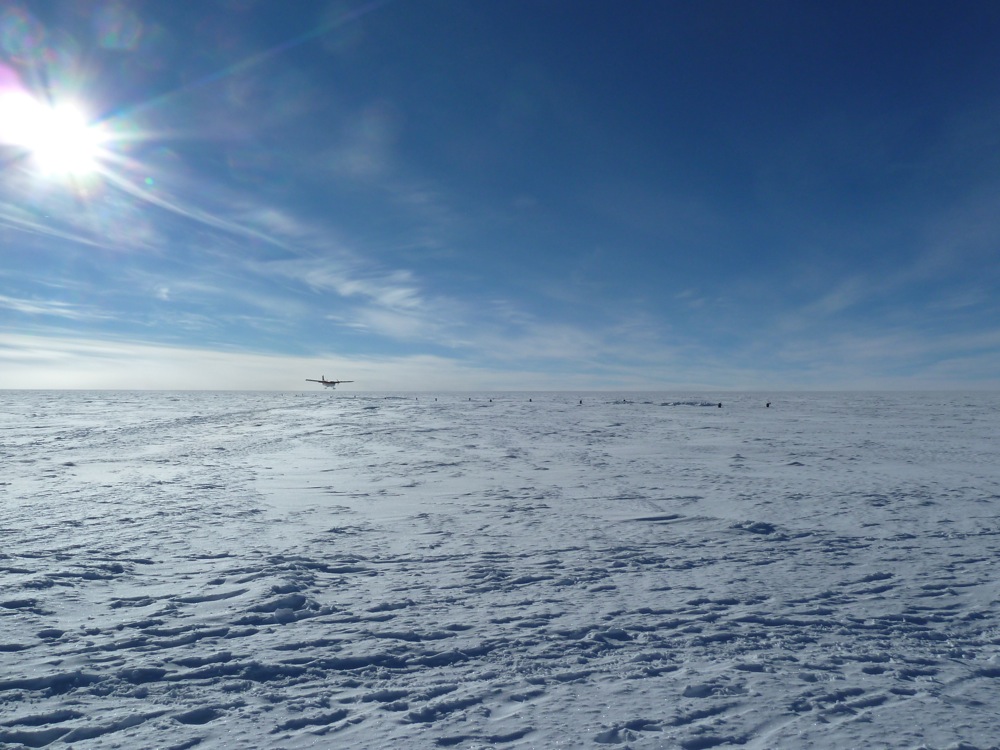
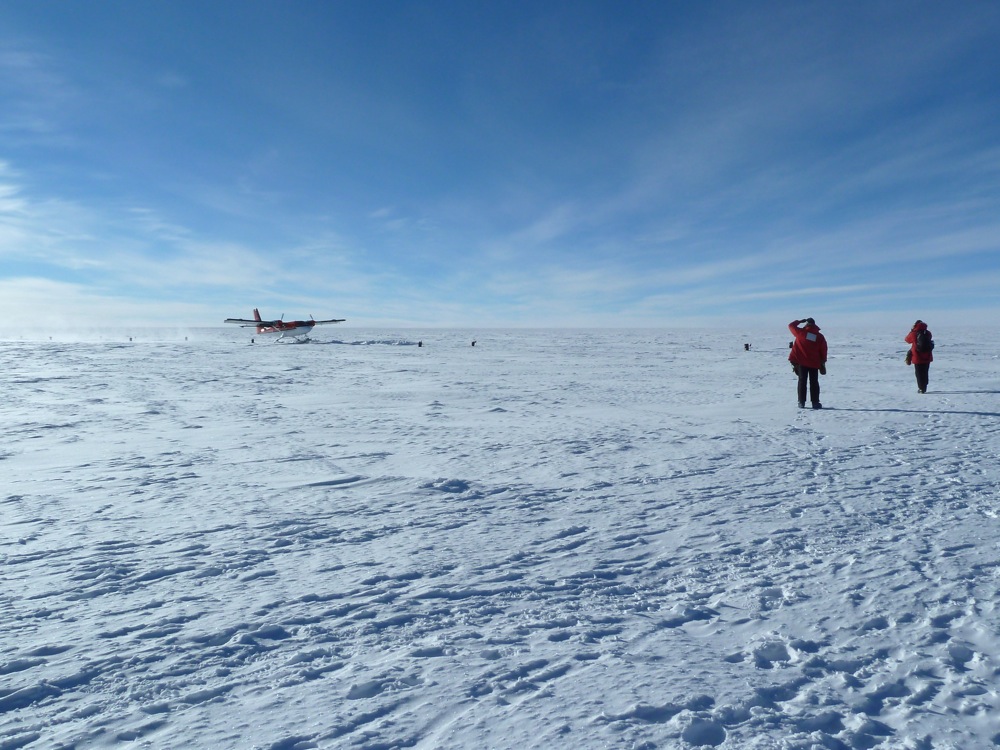
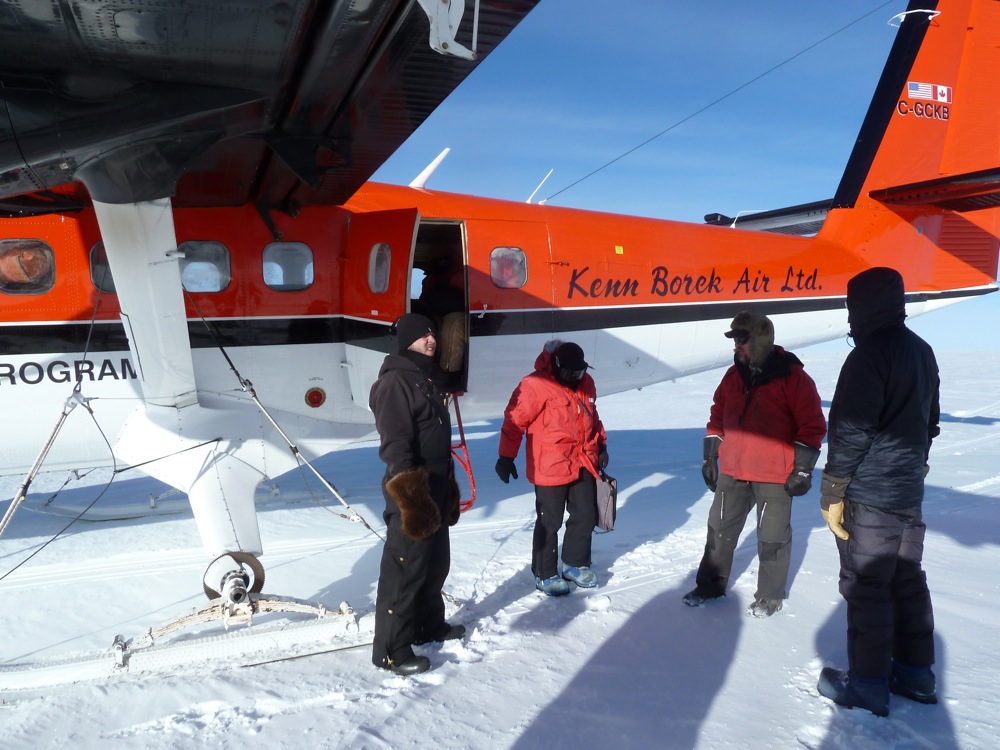
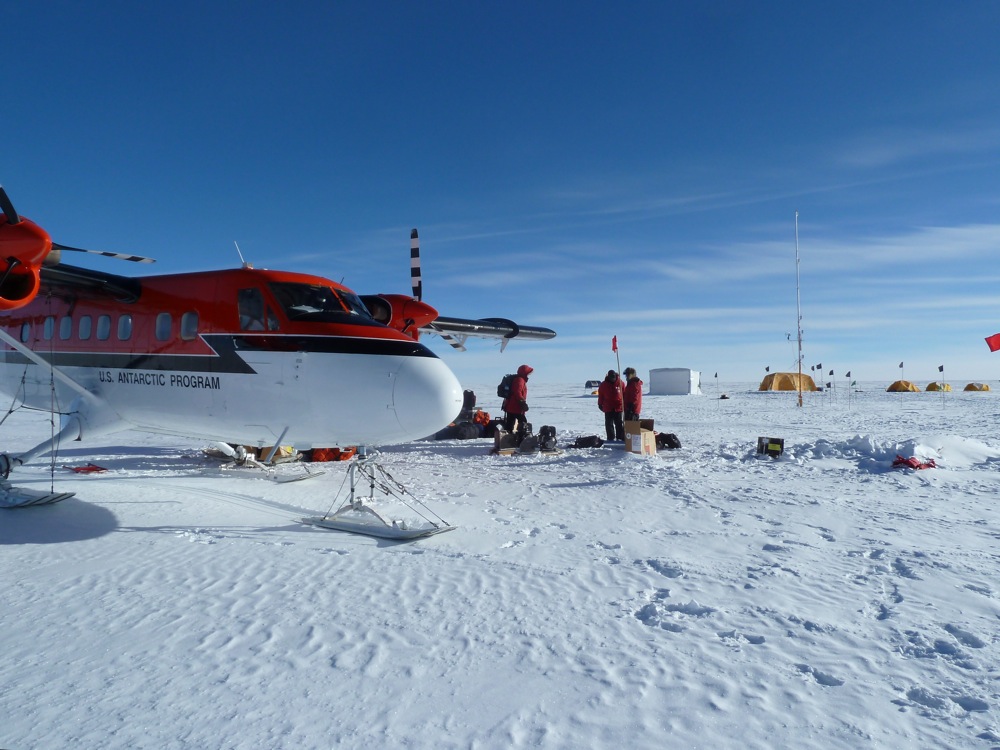
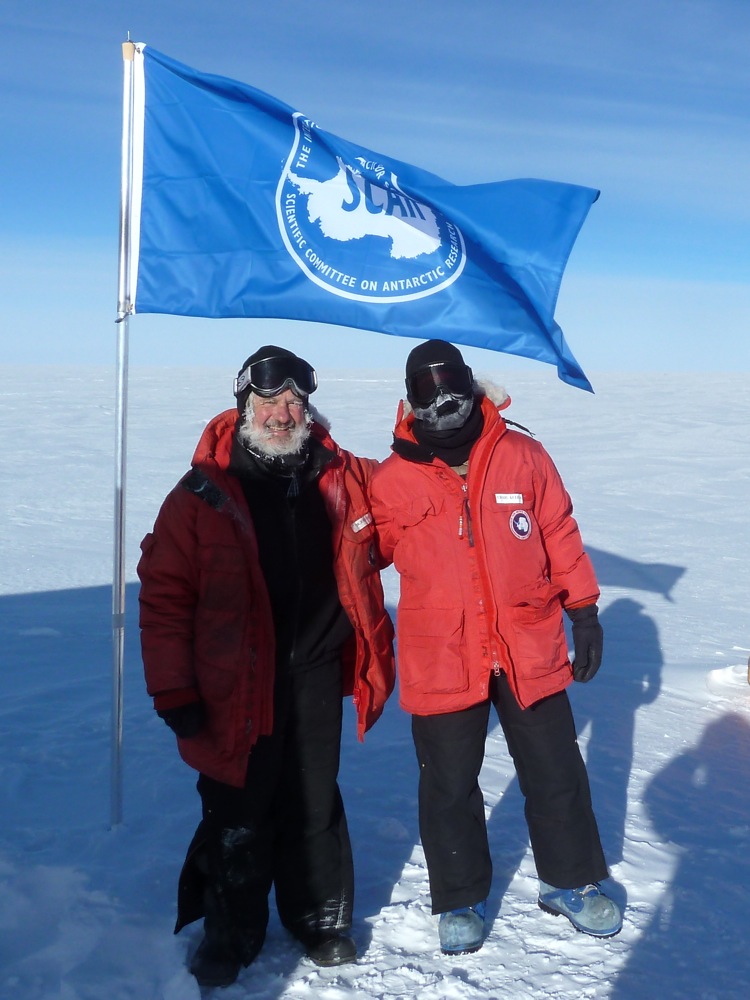
The new SCAR flag I brought with me this year is white-on-blue, rather than our earlier blue-on-white, a much better colour scheme for Antarctica! As these are the only SCAR flags in existence, I feel we can design them however we choose.
In fairly short order Geoff Nic and I clambered into the Twin Otter and were on our way. Despite our grooming efforts, the take off run was "interesting", although considerably less dramatic than the AGAP strip.
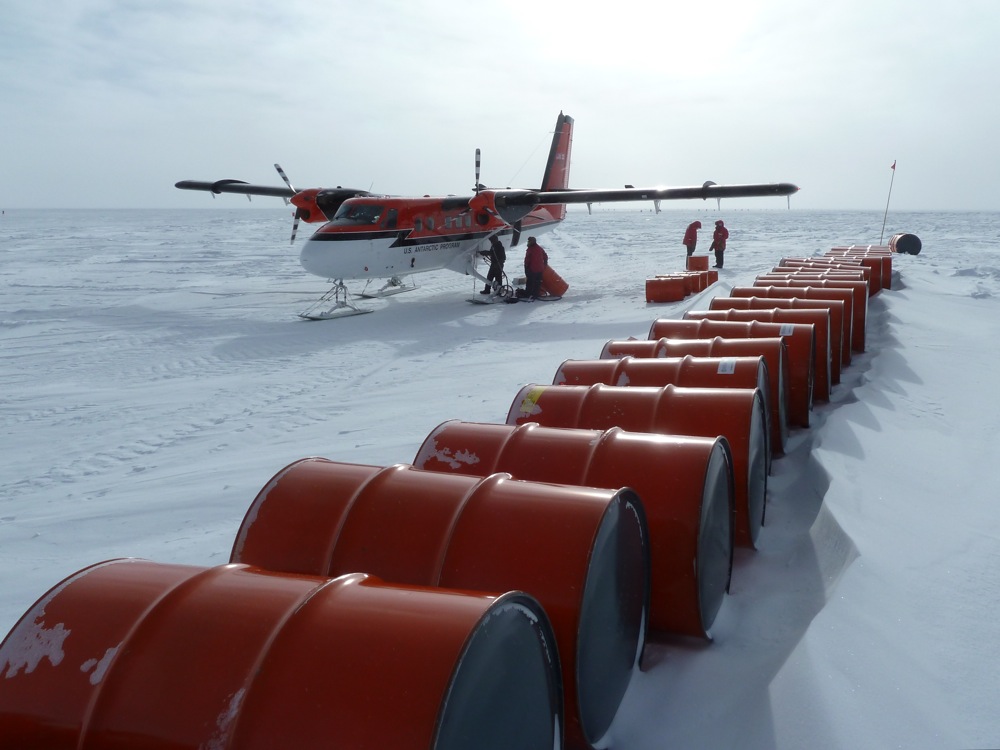
Back at Pole I headed straight for the shower, then joined the pilots for dinner.
We'll spend a couple of days at Pole, then back home via McMurdo and Christchurch. Abe Craig and Daniel get back to Pole tomorrow, so with luck there'll be some more news to report in future blogs.
← Back to South Pole Diaries 2012/13
